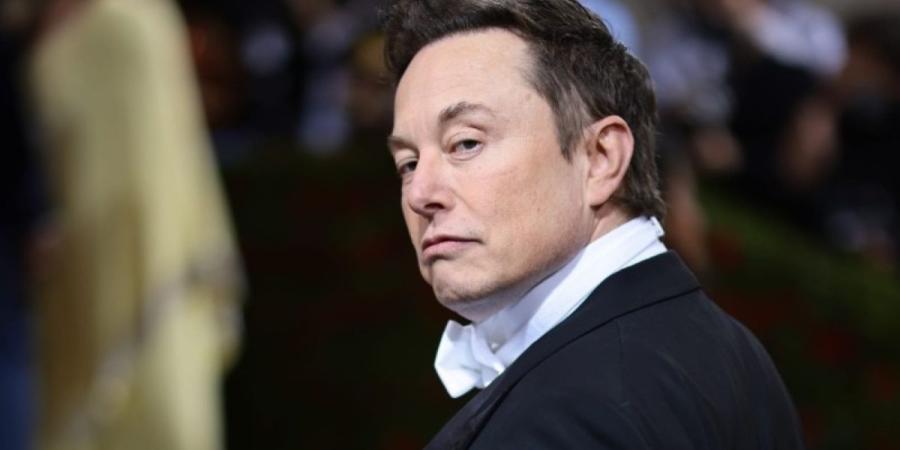اقترح الملياردير الأمريكي إيلون ماسك، مالك شركة «سبيس إكس»، نشر «كوكبة كبيرة من الأقمار الاصطناعية» تعمل بالطاقة الشمسية لـ«حجب الشمس» جزئيا، بهدف الحد من الاحتباس الحراري العالمي.
وقال ماسك في منشور له على منصة «X» التابعة له، إن «كوكبة كبيرة من الأقمار الاصطناعية المدعومة بالطاقة الشمسية ومدارة بالذكاء الاصطناعي ستتمكن من توفير كميات دقيقة من الظل للحفاظ على درجة حرارة الأرض في المستوى الدقيق المناسب».
يأتي هذا الاقتراح ردا على فكرة مستوحاة من مستخدم على «X» اقترح «مرفق دافع للأرض لضبط مدارها حول الشمس» لمواجهة تغير المناخ، لكن ماسك طورها إلى حل فضائي يعتمد على تقنية «إدارة الإشعاع الشمسي»، إذ تقوم الأقمار بمرآة أو عاكسة لجزء صغير (1-2%) من أشعة الشمس لتعكسها إلى الفضاء، ما يقلل من امتصاص الحرارة ويُبرد الكوكب تدريجيا.
وأضاف ماسك في تعليقات لاحقة: «ستحتاج التعديلات إلى كميات صغيرة فقط لمنع الاحتباس الحراري أو التبريد العالمي»، مشيرا إلى أن «سبيس إكس»، التي أطلقت أكثر من 10 آلاف قمر «ستارلينك» بحلول أكتوبر 2025، يمكن أن توسع هذه التقنية بسرعة، ربما لتصل إلى 100 غيغاوات سنويا من الطاقة الفضائية خلال 4-5 سنوات.
وأثار المنشور، الذي حصد أكثر من 29 مليون مشاهدة في ساعات، جدلا واسعا، حيث ربط ماسك الفكرة بـ«حضارة كارداشيف النوع الثاني»، التي تستغل طاقة الشمس الكاملة، قائلا: «ربما غرضنا هو صنع عقل شمس واعية».
مع ذلك، حذر خبراء المناخ من المخاطر، مثل البروفيسورة سامي بوزارد من جامعة نورثمبريا البريطانية، من أن «هذا غير مخطط وغير متوازن؛ يجب ألا يقرر فرد أو دولة المناخ للآخرين، خصوصا مع مخاطر غير متوقعة مثل تكاليف الكربون العالية لإطلاق الأقمار والحوكمة العالمية».
وكانت دراسات من جامعة هارفارد (2024) قد أشارت إلى أن مثل هذه الكوكبة قد تكلف أكثر من 100 مليار دولار، وتسبب اختلالات إقليمية في الأمطار أو الزراعة، أو حتى تفاقم تغير المناخ إذا فشلت.
ويأتي اقتراح ماسك، في سياق تصاعد القلق العالمي من الاحتباس الحراري، إذ أفادت تقارير الأمم المتحدة (IPCC 2023) بأن درجة الحرارة العالمية ارتفعت بنحو 1.1 درجة مئوية منذ عصر ما قبل الصناعة، مع توقعات بوصول 1.5 درجة بحلول 2030 إذا لم تُخفض الانبعاثات بنسبة 45%.
ولا تعد الفكرة جديدة، إذ اقترحها العلماء منذ السبعينات، مثل جيمس هانسن في ناسا، وتشمل طرقا أرضية مثل حقن الجسيمات العاكسة في الستراتوسفير (مثل ثاني أكسيد الكبريت، مستوحاة من براكين مثل بيناتوبو 1991 التي خفضت درجة الحرارة بنحو 0.5 درجة لعامين)، أو فضائية مثل مرايا عملاقة في نقطة لاغرانج L1 (على بعد 1.5 مليون كم من الأرض).
The American billionaire Elon Musk, owner of SpaceX, proposed deploying "a large constellation of solar-powered satellites" to partially "block the sun," aiming to mitigate global warming.
Musk stated in a post on his platform "X" that "a large constellation of solar-powered satellites managed by artificial intelligence will be able to provide precise amounts of shade to maintain the Earth's temperature at the exact appropriate level."
This proposal comes in response to an idea inspired by a user on "X" who suggested "an Earth propulsion facility to adjust its orbit around the sun" to combat climate change, but Musk developed it into a space-based solution relying on "solar radiation management" technology, where the satellites would use mirrors or reflectors to deflect a small portion (1-2%) of sunlight back into space, reducing heat absorption and gradually cooling the planet.
Musk added in subsequent comments: "The adjustments will only need small amounts to prevent global warming or global cooling," noting that "SpaceX," which launched over 10,000 Starlink satellites by October 2025, could rapidly scale this technology, potentially reaching 100 gigawatts of space-based energy within 4-5 years.
The post, which garnered over 29 million views within hours, sparked widespread debate, as Musk linked the idea to a "Type II Kardashev civilization," which harnesses the full energy of the sun, stating: "Perhaps our purpose is to create a conscious solar mind."
However, climate experts warned of the risks, such as Professor Sami Bouzar of Northumbria University in the UK, who cautioned that "this is unplanned and unbalanced; no individual or country should dictate the climate for others, especially with unforeseen risks like the high carbon costs of launching satellites and global governance."
Studies from Harvard University (2024) indicated that such a constellation could cost over $100 billion and cause regional imbalances in rainfall or agriculture, or even exacerbate climate change if it fails.
Musk's proposal comes amid rising global concern over global warming, as United Nations reports (IPCC 2023) indicated that global temperatures have risen by about 1.1 degrees Celsius since pre-industrial times, with projections of reaching 1.5 degrees by 2030 if emissions are not reduced by 45%.
The idea is not new, as scientists have proposed it since the 1970s, such as James Hansen at NASA, and it includes ground-based methods like injecting reflective particles into the stratosphere (such as sulfur dioxide, inspired by volcanoes like Pinatubo in 1991 that lowered temperatures by about 0.5 degrees for two years), or space-based methods like giant mirrors at the L1 Lagrange point (1.5 million km from Earth).


0 تعليق